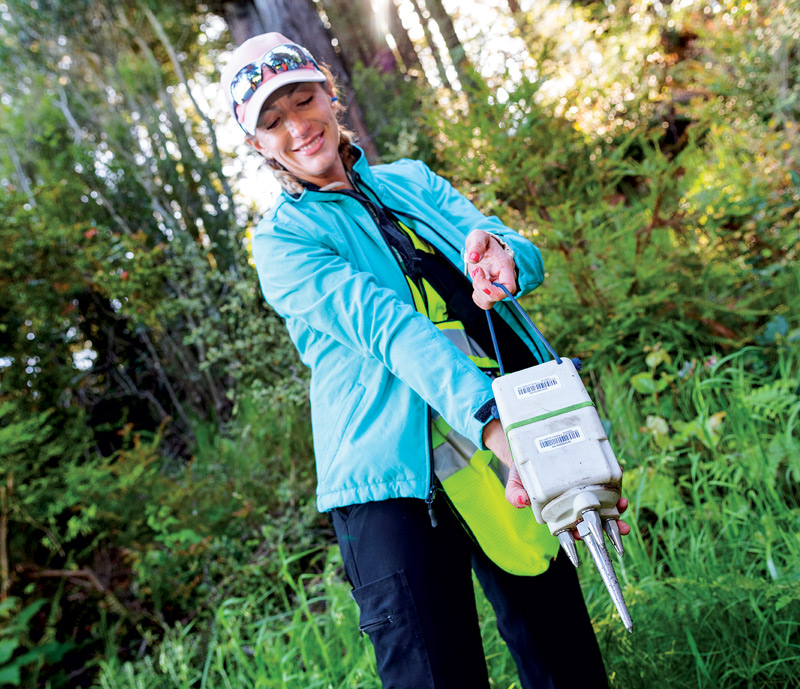The Future of Earthquake Detection

One of nearly 50 seismometers or nodes that Geology students like Kari Stockdale (above) installed in Arcata along fiber optic cables.
Underground fiber optic cables have been installed across Humboldt County. A community of federal and state scientists, including Cal Poly Humboldt researchers, believe the county’s newest fiber optic cables may provide valuable feedback about earthquakes. These cables may enhance the early warning system and detect faults that may produce future earthquakes.
The fiber optic cable project is just one of a number of global research efforts underway by Cal Poly Humboldt faculty, students, and alumni to better understand, prepare for, and respond to earthquakes.
Fiber optic cable is the backbone of the internet. Currently, the world’s longest fiber optic line is being built between Humboldt County and Singapore to improve worldwide connectivity and local broadband service.
Along with installation of this long trans-Pacific cable, there is an effort to expand internet accessibility to rural regions of Humboldt County by installing shorter fiber optic cables along regional highways. One such cable exists between Arcata and Eureka.
Fiber optic cables can detect changes in the earth during earthquakes. “The ground’s movement slightly disrupts the light traveling through the cable, creating a distinct signal,” according to a 2023 WIRED article. Researchers are investigating just how the optic parameters of the cable react when shaken by an earthquake.
If fiber optic cables prove to provide valuable insights into ground movements, the underground cables could be used to better understand and monitor earthquakes and other geologic hazards.
With the cooperation of the county, City of Arcata, PG&E, and local landowners, researchers installed about 50 seismometers, small instruments that respond to ground noises and movement, along the new line beginning last summer. They are conducting a multi-month evaluation of the line, detecting even the smallest earthquakes that occur on a daily basis in the region, which is the most seismically active area of the continental United States. Cal Poly Humboldt Geology students have been part of the seismometer installation, battery replacement, and data recovery. They will also participate in the future analysis of the data.
“You can’t understand an earthquake unless you record the wide range of frequencies that it puts out,” says Kari Stockdale, a Geology student who was involved in the installation and will continue to research the data. “Seismometers are the controls that really help us understand what’s going on in the earth. The project has successfully recorded dozens of earthquakes in its first two months.”
This is a collaboration between Cal Poly Humboldt, the U.S. Geological Survey, UC Berkeley, University of Washington, Cal Tech, Vero Communications, OptaSense Inc., and city and county governments, including the Arcata Police Department who allowed the project to house some equipment in their storage facilities.
Video: Learn more about how fiber optic cables can detect earthquakes at link.humboldt.edu/seismometers.